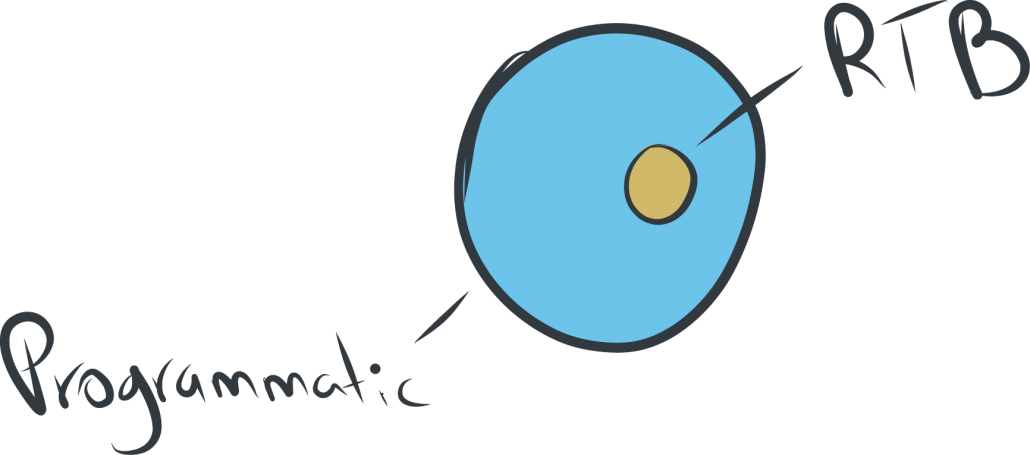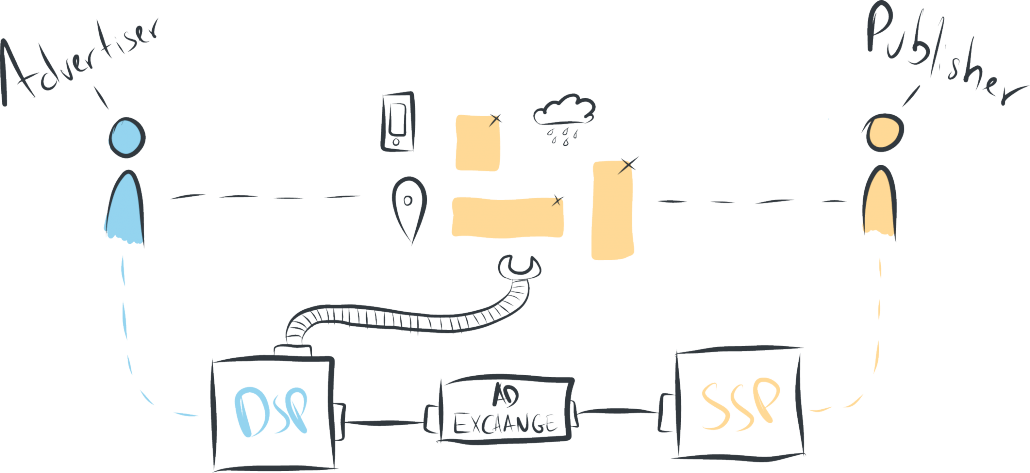What is the difference between Programmatic and RTB advertising?
A common point of confusion in the world of digital media buying is the difference between programmatic and real-time bidding or RTB. One of these things is like the other, but they’re not the same. Programmatic is the automated format of ad buying, while real-time bidding is one type of programmatic, referring to a lightning quick auction that takes audience data into account to assess the value of an impression to a certain advertiser.

What is programmatic?
Programmatic uses technology to automate media buying and ad placement in digital space. It’s a much cheaper and more efficient way of media buying as it eliminates the need for salespeople, while reducing human error and inconsistency.
Before you go worrying that machines are taking over, programmatic doesn’t make people obsolete, it just takes care of boring tasks like insertion orders and ad tagging, so people can be more effective.
What is RTB?
RTB enables more specific targeting, since information about the user’s browsing habits are communicated in real-time Twitter icon from their browser to an ad exchange and are important for the outcome of the auction.
Many advertising industry insiders predict that over the next five years programmatic ad buying will be the norm, with RTB being a big piece of that. Through the use of data and technology, programmatic brings greater efficiency and scale to campaigns Twitter icon Reaching the right person at the right time makes advertising more relevant and useful to its audience, making advertising better for all of us.
Source : Jess Thompson
Intro to Programmatic Advertising
Display Advertising Basics P2 (RTB, DSP, Programmatic, Private Exchanges, PMP) - Pete Kluge, Adobe
What Is a DSP, SSP and Ad exchange, and how do they fit together?
1. What is a DSP?
A DSP, or demand-side platform, allows advertisers to buy impressions from a wide range of publisher sites that are targeted to specific users based on things like location and previous browsing behaviours. A DSP ‘plugs in’ to an ad exchange (covered below), where publishers make their inventory available. DSPs analyse the impressions SSPs put out and purchase on behalf of advertisers. They might pay more for impressions in a certain location or to reach a consumer who might find that ad relevant
2. How is a DSP different to an ad network?
DSPs pick up where ad networks left off. There’s some overlap in that you can access a wide range of inventory and targeting, but the key differentiator is that DSPs offer a centralised tool for buying, serving and tracking ads, and therefore the ability to optimise campaigns more easily.
3. Is this another example of machines taking over?
Kind of, but that’s only a problem if you’re a lover of faxing. DSPs remove some of the more monotonous tasks involved in advertising to empower campaign managers to focus on optimising campaigns and improving the quality of their advertising. DSP removes any risk of human error and cuts costs on sales people and ad buyers. This makes the process cheaper and more efficient, as there’s no longer any need for negotiating ad rates or faxing manual ad insertion orders

4. So then what’s an SSP?
An SSP, or Supply-side platform, is used by online publishers to automate the selling of their advertising space, or inventory. It’s basically the same as a DSP but from the other side. While a DSP used by marketers to buy ad impressions from exchanges as cheaply as efficiently as possible, SSPs designed for publishers to maximise prices they sell impressions at. They’re both powered by similar kinds of technology.
SSPs allow publishers to connect their inventory to multiple ad exchanges, DSPs and networks all at once, opening it up to more potential buyers. SSPs also offer publishers the ability to set up ‘price floors’, or the minimum amount they will sell their inventory for to specific buyers or through specific channels. For example, some publishers may lower their price slightly for a new advertiser as a way to bring them onto their site. SSPs are also sometimes referred to as a sell-side platform or yield-optimisation platforms.
5. Got it. So an ad exchange is like a digital marketplace
Yes. Publishers stock up ad exchanges with their impressions, and advertisers pick the ones most appealing to them. This benefits both sides, as publishers make their inventory more widely available and advertisers have a bigger range of choice, all in one place.
An ad exchange is similar to an ad network, but networks will often add their own mark up to the inventory. Ad exchanges can be open or private, with the latter giving the publisher more control over which advertisers can buy impressions on their site and at what price.
Source : Jess Thompson